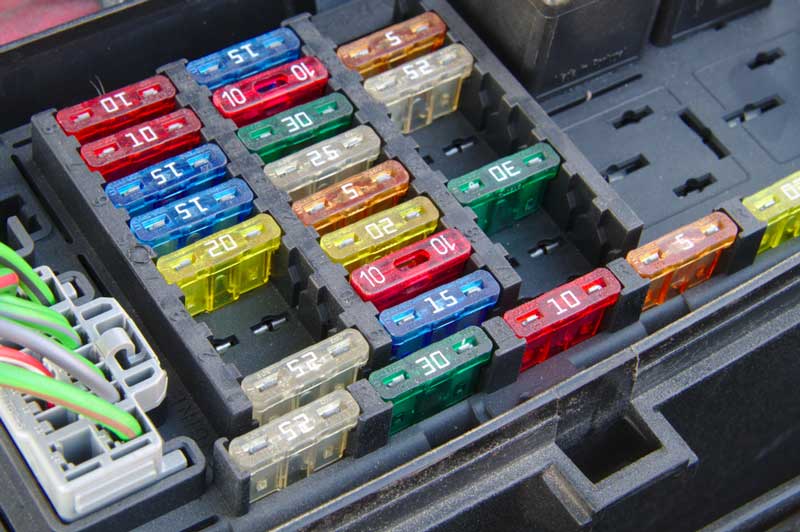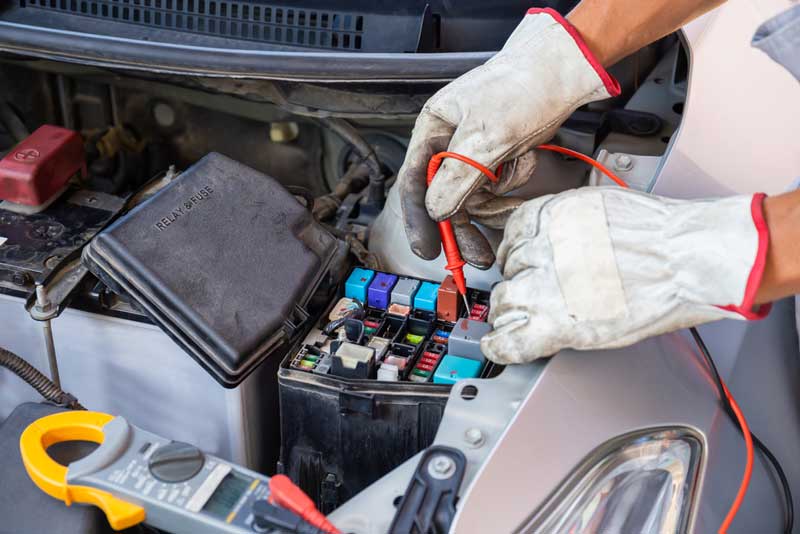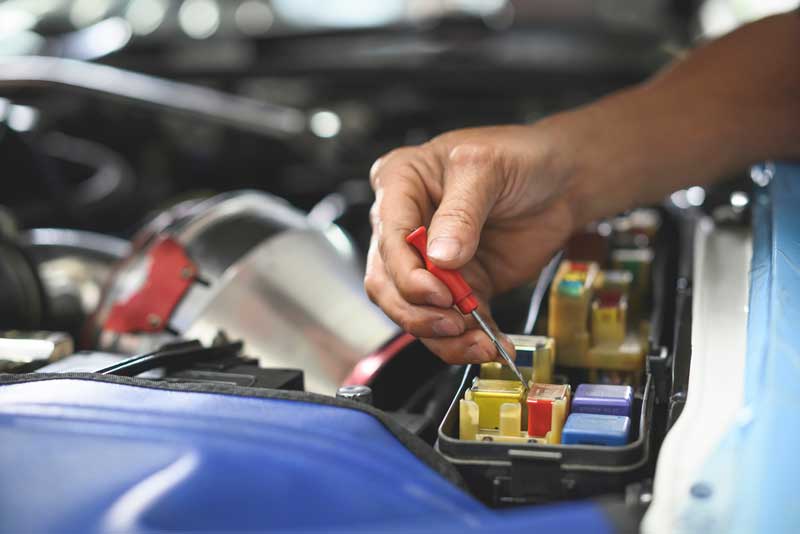Are you experiencing some malfunctions in your vehicle? Your relay might be the culprit. Would you like to know how to tell if a relay is bad?
Vehicles have several electrical components. So, searching for the source of the problem could be challenging. Unfortunately, serious problems can occur as a result of misdiagnosis.
This article will guide you on how to tell if a relay Is bad, the cost of replacing a relay, and a lot more you should know about a relay, including its functions.
Let’s get started!
How to Tell if a Relay Is Bad
To tell if a relay is bad, you will want to listen and feel for any clicks. If you hear clicks, this implies the relay works on the side with the coil and energizing circuit. If however, you do not notice any sounds, there is a problem with the relay.
Follow these steps to check if your relay is in good working condition:
Step 1: Check Out for Clicking Sounds
In a situation where the accessories of your vehicle are not functioning well, and you are skeptical if the relay is still in good condition, you could perform a simple examination to verify your skepticism. Check the owner’s manual, if you are finding it hard to locate where the relay is in the vehicle.
If, for instance, one of the horns is not generating sound whenever you press the switch on the steering wheel, let someone else press the horn as your finger is placed on the relay. Again, to listen and feel any clicks.
When you hear or feel clicks, your relay might be working on one area, i.e the side with the energizing coil and circuit. Nevertheless, if the horns do not produce any sound, the relay and the contact circuit have a problem. This could be that there’s a bad contact or no power is getting to this area, a bad ground connection, a faulty horn, or a faulty fuse relay.
Alternatively, if you did not hear or feel any click as you press the horn, it might mean that the energizing circuit and the relay have problems. It can also be that the internal part of the relay is broken, or no power is passed to the circuit.
Step 2: Interchange Relays
One easy method of knowing if the relay is bad is to substitute it with a different one similar to it. First, you must ensure that the two relays have identical numbers.
Then, the substitution would be between the working relay and the bad one. You could test the circuit first, to be sure it’s working. And if it is for headlights, make sure the headlight works well. If any of the vehicle’s accessories, functions well with the other relay, you will be convinced that the first one has a problem.

What Is a Relay?
They can be seen in virtually all vehicles, and are also used in aviation and marine applications. They are normally employed to allow a reduced amperage circuit, to regulate an elevated amperage circuit. The relay stands as a button, that allows the reduced amperage circuit to swerve to a higher amperage circuit, off or on.
For instance, the headlight of your vehicle. If the lights are directly connected to the off/on switch in your vehicle’s dashboard, the amperage can surpass the capacity of your switch, which could lead to the melting of wires and, in some situations, lead to a fire. The relay could also control several systems simultaneously, like extending the antenna whenever you turn on the radio or initiating your headlight whenever you turn on the windshield wipers.
Also Reas: Brake Pad Replacement Cost
Warnings to Tell If Your Relay Is Bad
It is necessary to know the symptoms if you would want to detect a bad relay. Most of your vehicles’ electrical parts are connected to the relay, so a bad relay can lead to failure. All the components connected to the relay, tend to fail if the relay is bad. Regardless of which components it is, be it the power windows or the vehicle’s air conditioning, they are all liable for this issue.
Though a lot of reasons could cause the relay to stop functioning, the reason could be that there’s dirt inside the relay. Or rather, it might have been loose and have to be tightened. Nevertheless, you will always notice some signs indicating that the relay is failing.
Signs of a Bad Relay
The Car Will Stop
When the relay that is linked to the ignition is faulty, your car will stop. This is because the sparks going to your spark plug won’t be available. And this would cause the absence of current, and there would be no combustion.
Weak Lights
When the relay linked to the headlight is bad, you might not be able to drive when it’s dark. This is because, the headlight might be dim for you to drive in the dark, or it might not even turn on.
Faulty Power Windows
The relay of the power window might be bad. This implies that the windows might not work properly. They might get stuck, while you’re trying to roll down or operate partially. Nothing might happen if you press the will-down windows button.
Unstable Air Conditioning
The different reasons could lead to your air conditioning not functioning. Sometimes, it might seem like it’s working, but it might not be that cool. On the other hand, air might not go out at all from the vent, or the A.C. relay could malfunction.
As the examples above have shown, all electrical components have relays, which could either be a power window or air conditioning, which would not work if the relay is not functioning. In some instances, it might seem to be working but not as it should.
Also Read: Temporary Fix for Crankshaft Position Sensor (Expert Guide)
What Is the Price for Testing a Relay?
The costliest part of replacing and testing vehicle relays is the relay. The cost of the relay depends on the components it is controlling. A relay could cost you about five to lots of hundred dollars.
For the ohm meter, you can get it at the state of $20 or less, and it comes in different designs. Test lights of high impedance are likely expensive, costing about $20-$40, but the fact that you spend more does not guarantee a quality product.
Lastly, the jumper wires range from $2 to $50 or more, banking on the length of the wires.
Steps to Tell if a Relay is Bad in a Car
Let’s begin the test process to tell if the Relay is Bad in a Car.
- Find the relay that needs to be tested. This can be seen under the engine bay or the dash, based on the component it controls. If you are unsure of the position, check the user’s manual for the wiring program, and the electrical chapter.
- The easiest and quickest way for your relay to get tested, is to exchange it with a working one. One of the shortcomings is that the same issue that stopped the first can also affect the new one. You would also have to spend some money too. Clean and inspect the connectors after taking out the relay.
- Set your multimeter to ohms. Place your hand in the leads, across the pins on the electromagnetic coils, and take the resistance measurement. If it is between 50 ohms to 120 ohms, it’s ok. More than this simply implies that you have a bad coil, and you should get a new relay.
- Don’t change the multimeter. Place your hands on the leads across these switch pins. Normally, the relay would read O.L. or open.
- Stimulate the coil using a 9 to 12v battery between the pins. You should hear a click from the relay, as the coil is stimulated and shut the switch. Though polarity does not count on the four-pin relay, it matters on diode relays.
- When your coil is still stimulated, jump the battery positive to the other terminal. Join the test light that is between the ground, and the other terminal. The light would take current and turn on. Take our positive battery jumper. The light would turn off.
- Then test the voltage of the relay. Poor point of contact can lead to voltage drop. So, take out the light, set your multimeter to direct current volts, and test the light connectors to touch the leads between the switch pins. The voltage of the battery and the readings should harmonize.
- Then test the switch for the right resistance. Disengage the positive jumper wire and Stimulate your electromagnetic coil. Then set your multimeter to ohms, and take the resistance measurement across these switch pins. A stimulated open relay would normally measure about zero ohms, and a closed one would read O.L. or open.
Suggested Tips on Testing Your Relay
We have tested some relays for years now, and have seen the simplest process of testing your relay. Here are some tips that could help you:
- Most times, everybody wants to be able to find their way when it comes to automotive tasks, but at times, it is better to go back to manual. Check the service manual of the vehicle you own all the time.
- Whenever you are in doubt, say something. If you are not sure of the condition or functionality of your relay, replacing it would be a good idea. Though some relays could be expensive to get, they are generally affordable, and it is better to be safe than to be sorry.
- Collect all the tools you’ll use on time. Chefs and cooks refer to this step as “mise en place,” which also means that everything is in its position, and this enables you to focus on the job at hand, without having to start looking for tools to use.
- If you do not have a test light or an ohmmeter, you would not be able to test the relays. Replacing them might be a good option, but you’ll not be sure if truly the relay is bad or not if you don’t test it.

What Is the Cost of Replacing a Relay?
You can take your vehicle to a mechanic for repair, as soon as you can tell if your relay is defective. The cost will depend on the location of the mechanic. The model and make of your car would also influence the cost.
The average cost is between $60-$100. It might be higher or lower, this depends on the model of your vehicle. The parts would cost you about $20 there.
Depending on the condition of your relay and the type of vehicle you own, the aftermarket relay could cost you about $250. You might even get it for as low as $50.
The labor cost also depends on the area you stay. The prices of the relay differ for each vehicle. So even though the relay itself is not costly, the labor cost can be high based on your location.
Also Read: Brake Lights Stay On (Causes & Solution)
Frequently Asked Questions – How to Tell if a Relay Is Bad
What are the most popular symptoms and signs of a bad relay?
When your vehicle stops working: This is the most popular sign of a bad relay if your car stalks suddenly while operating. If the relay burns out, shorts, or falls while operating the engine, the ignition system, and the power to your fuel pump, will be cut off.
How can you tell if the relay switch is blown?
Use your multimeter to test the relay. Set it to ohms and place your finger on the leads, across the pins of the electromagnet coil to read the resistance. This should be around 50-120. If it is more than this or it reads open, that means the electromagnet coil is bad.
Will a defective relay still click?
An electrical signal will not pass through your battery to the starter if the starter relay is defective. Due to this, the engine would not start regardless of the number of times you use your key to start it. A bad relay creates a clear clicking sound most times when your, vehicle is turned.
How do you tell if a relay is bad with a multimeter?
Connect the coil terminals of your relay, to the leads of the multimeter. The readings should be around 40 ohms to 120 ohms, for a good coil. But if the coil is bad, i.e, it’s open, it would be out of this range, and you need to swap the relay.
What causes a relay to fail?
Mechanical wear out of the internal components, and contamination is the two most popular cause of relay failure. Contamination is one major reason why relays fail on time.
Conclusion – How to Tell if a Relay is Bad
One major part of your vehicle is the relay. The relay secures efficient operation of all the vehicle’s electrical systems. So, whenever the relay is bad, it might take a little time to identify it.
Since there are several relays in the vehicle, inspecting them one after the other would require some time. Check the user’s manual for a guide, on how to locate all the relays in the vehicle. This would save you some time.
How to recognize and understand the relay is important to replacing or repairing the relay. Whenever you see a sign indicating a malfunction, try to replace your relay as soon as possible. Make use of the information stated above, to know how to tell if your relay is defective. Since the process of replacing is easy, you can do it yourself. You can also reach out to a mechanic when you need any help.

